- News
- Reviews
- Bikes
- Accessories
- Accessories - misc
- Computer mounts
- Bags
- Bar ends
- Bike bags & cases
- Bottle cages
- Bottles
- Cameras
- Car racks
- Child seats
- Computers
- Glasses
- GPS units
- Helmets
- Lights - front
- Lights - rear
- Lights - sets
- Locks
- Mirrors
- Mudguards
- Racks
- Pumps & CO2 inflators
- Puncture kits
- Reflectives
- Smart watches
- Stands and racks
- Trailers
- Clothing
- Components
- Bar tape & grips
- Bottom brackets
- Brake & gear cables
- Brake & STI levers
- Brake pads & spares
- Brakes
- Cassettes & freewheels
- Chains
- Chainsets & chainrings
- Derailleurs - front
- Derailleurs - rear
- Forks
- Gear levers & shifters
- Groupsets
- Handlebars & extensions
- Headsets
- Hubs
- Inner tubes
- Pedals
- Quick releases & skewers
- Saddles
- Seatposts
- Stems
- Wheels
- Tyres
- Health, fitness and nutrition
- Tools and workshop
- Miscellaneous
- Cross country mountain bikes
- Tubeless valves
- Buyers Guides
- Features
- Forum
- Recommends
- Podcast
feature
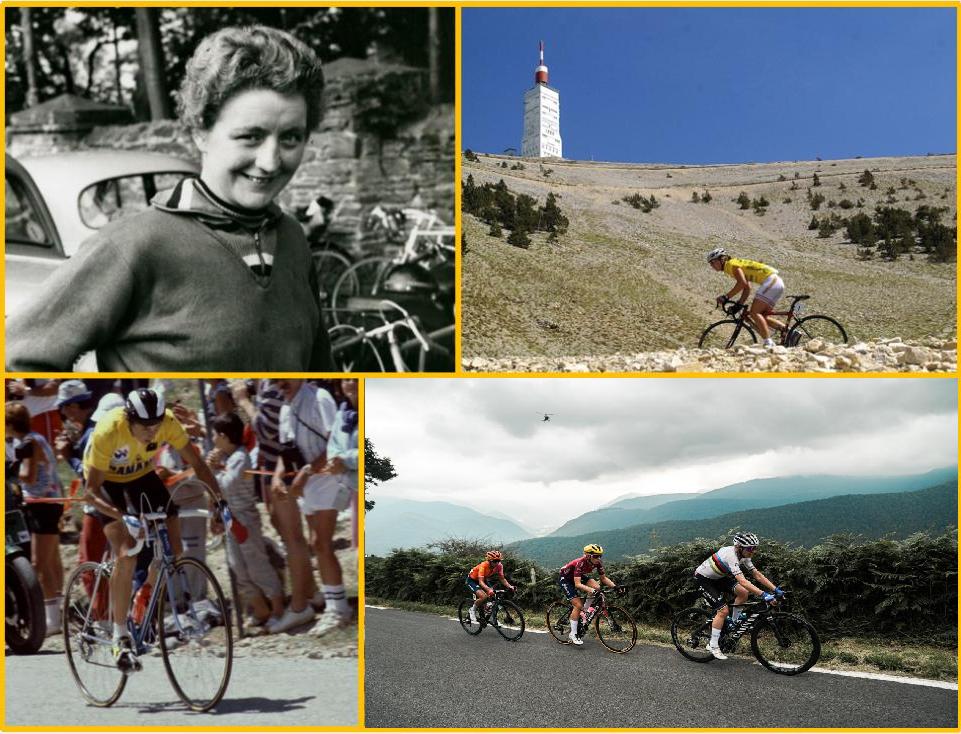 A brief history of the women's Tour de France
A brief history of the women's Tour de FranceThe Tour de France Femmes’ Long and Winding Road: A brief history of the women’s Tour de France
On Monday, just before lunchtime, the peloton will roll out of Rotterdam for start of the third edition of the relaunched Tour de France Femmes (avec Zwift, if you want to keep the sponsor happy). After the roaring success of the 2021 and 2022 Tour Femmes, in terms of both the racing and the fervent roadside and television audience (the 2023 edition's Pyrenean crescendo attracting more than four million TV viewers in France alone), expectations are high for an event that is already, just two years into its renaissance, an integral part of the women’s cycling calendar.
Not that the Tour de France Femmes is resting on its laurels, however. The 2023 edition appeared keen to cast off the shackles of its association with the all-encompassing Tour Hommes – the Paris start, a kind of symbolic ‘handover’ from the men’s race was removed last year, a decision informed, race director Marion Rousse says, partly by a desire for the race to assert its independence, and partly to put together an interesting sporting test.
This year, with the Olympics in town, that's even more the case, the race instead opting for its first foreign start, and what better location than a cycling-mad Netherlands home to the last two winners, the now-retired Annemiek van Vleuten and this year's favourite and defending champion Demi Vollering.
In fact, since the race returned to the calendar in 2022, exactly half of the 18 stages have been won by a Dutch rider, while next door neighbour Lotte Kopecky from Belgium is the only rider not from the Netherlands to have worn the famous yellow jersey.
So it is fitting that this year's race has a triple-header of Dutch stages to kick off the action, before an Ardennes foray takes the peloton to halfway and back onto familiar French soil for the final four stages, culminating – again fittingly – in a much-anticipated finale on the ‘Dutch Mountain’ itself, L’Alpe d’Huez.
No direct handover from the men's race required, the race will stand independently in its own right, the later calendar position and heavy non-French theme during the opening stages a somewhat enforced decision due to the pesky Olympic Games.
A first foreign start, a first August edition, and on the final day a first trip (sort of) to the mythical Alpe d'Huez, where the race will be decided a week on Sunday. We say 'sort of' because if you were to read from the official Tour preview, you'd be fooled into thinking – with the exception of one or two casual references to the 1980s – that everything began in 2022.
But the Tour de France Femmes avec Zwift (to give it its full title), as all those who fought to secure a stable, successful Tour de France for female riders will attest, forms part of a long history, one even more circuitous and taxing than the route the riders will face through the Netherlands, Belgium, and down to the French Alps over the next seven days and eight stages..
The long, hard fight
Because rather than a historic first, 2022’s “inaugural” Tour de France Femmes was something of a rebirth, the culmination of a long fight to get something back, not gain something new.
The first women’s Tour de France was, in fact, held almost seven decades ago, in 1955. The race was the brainchild of journalist and sometime-team manager Jean Leulliot, who organised the infamous Circuit de France stage race in 1942 with the collaboration of the Nazis, and was the race director, and then owner, of Paris-Nice.
The inaugural Tour de France Féminin – only the second women’s stage race of its kind, after the Circuit Feminin Lyonnais-Auvergne was held earlier that year, in July – took place over five days in Normandy in September and October 1955.
It was won by Irish-born Isle of Man rider Millie Robinson, the winner of the Lyonnais-Auvergne race two months previously, who secured her historic (and largely forgotten) success via a late attack into Elbeuf on stage four and a dominant time trial performance – unsurprisingly, for someone from this part of the world – the following day.
However, despite the race’s apparent success, Leulliot quickly abandoned his experiment after just one edition.
Almost three decades later, in 1984, the idea was eventually revived by the Tour’s co-organiser Félix Lévitan. This time, the event much more closely resembled the men’s race and could properly be described, in the modern parlance, as a ‘Grand Tour’, and one which actually took the riders on a tour of France.
Two-time Tour Féminin winner Maria Canins climbs the Col d'Izoard during the 1986 race
The 1984 edition, held in the same summer as the inaugural women’s road race at the Olympic Games, took place over 18 days, with the women riding shortened versions of the men’s stages, including the iconic Alpine and Pyrenean passes such as the brutal Col de Joux Plane, earlier in the day.
That first-ever Tour de France Féminin, won by American Marianne Martin (two years before Greg LeMond became the country’s first male winner), kickstarted what was arguably the first ever golden age of women’s cycling.
Running concurrently with the men’s race meant that the pioneering women’s peloton were greeted by the same huge crowds, on the same iconic roads, while images of three-time winner Jeannie Longo – who enjoyed a brilliant rivalry with Italian double winner Maria Canins – on the final podium in Paris alongside Stephen Roche and LeMond, are embedded in the psyche of cycling fans of a certain vintage.
However, despite its links to the men’s event, the Tour de France Féminin retained an amateur-style, hard-scrabble feel, and was barely promoted beyond those taking part and the people they passed on the roadside. The ‘Grand Tour’ aspect of the race was also increasingly diluted as interest struggled to ignite – by 1989, it had been reduced to an 11-day race and was almost 300km shorter than its 1984 equivalent.
Following that 1989 edition, won once again by the dominant rider of her generation Longo, incoming Tour director Jean-Marie Leblanc scrapped the race, citing the commercial and financial concerns of running a race with limited media coverage and sponsorship (Leblanc missing the irony, clearly, of who was responsible for drumming up that interest).
Even more crucially, Leblanc and organisers ASO prevented other aspiring race planners from using the Tour de France trademark, ridding subsequent attempts at a women’s Grand Tour in France, such as the initial Tour of the EEC (first won in 1990 by four-time world champion Catherine Marshal) of much-needed legitimacy and exposure.
The trademark issue became a persistent thorn in the side for the event’s eventual successor, Pierre Boué’s Tour Cycliste Féminin (which later became known in 1998 as the Grande Boucle Féminine, after ASO complained, predictably, about the previous name).
Despite featuring long and tough stages, and some of France’s most iconic climbs (the 1992 and 1995 editions also included finishes on Alpe d’Huez) the Grande Boucle struggled to draw in sponsors and was dogged by organisational difficulties such as poor accommodation and unpaid prize money. The two-week race was missing from the calendar in 2004, and returned in a much-shortened format the following year.
The final edition of the Grande Boucle in 2009, won by Emma Pooley (the third British triumph in four years following Nicole Cooke’s successes in 2006 and 2007) was only four stages and 306.5km-long, prompting Pooley to memorably describe it as “more of a Petite Boucle”.
Not that there was anything “petite” about the riders’ performances, however. The first of Cooke’s back-to-back wins, in 2006, saw the future Olympic and world champion ride away solo in the yellow jersey on Mont Ventoux – a poignant site for British cycling – to secure a dominant victory.
Rebirth
Nevertheless, the demise of the Grande Boucle acted as a catalyst for a rethink – for a women’s Tour de France to be successful and sustainable, it had to have the backing of, you guessed it, the Tour de France.
In the late 2000s, a campaign was launched by pro cyclist, film maker, and writer Kathryn Bertine, who was later joined by Pooley, the sport’s new superstar Marianne Vos, and triathlete Chrissie Wellington, to convince Tour organisers ASO to put their weight behind a real women’s Tour de France.
Lizzie Deignan outsprints Marianne Vos at the 2020 La Course
In 2014, the Tour organisers finally relented, to some degree, and came up with La Course by Le Tour de France. Originally held as a crit-style race around Paris on the same day as the final stage of the men’s race, the organisers then tinkered with a few mid-race experiments, while never expanding the event beyond two days.
Though La Course, and especially its first three years on the Champs-Élysées, felt at times like more of a concession than a statement of intent, a bolted-on afterthought rather than a sustainable plan for future growth, it nevertheless galvanised Bertine, Pooley, and Vos’s campaign for a proper, stable stage race under the Tour de France umbrella.
And with some scintillating racing to boot, especially once the race ventured beyond Paris – Annemiek van Vleuten’s stunning, last-ditch duel with Anna van der Breggen in the Alps in 2018 the undoubted highlight of the race’s tenure – even ASO couldn’t resist the hand of history, as well as the expectations of a sport and an audience that was fast outgrowing races seemingly more akin to amuse-bouches or petit fours than the full tasting menu of a Grand Tour.
In June 2021, ASO announced that a new women’s eight-day stage race, the Tour de France Femmes, would take place the week after the following year’s men’s race. A Tour de France for women was finally, after decades of struggle and frustrations, back.
And, it’s safe to say, the women’s peloton certainly made the most of the opportunity during a frenetic, exhilarating week on the fan-packed roads of France in the year of its return in 2022.
Stage four’s foray onto gravel brought drama and chaos, while Cecilie Uttrup Ludwig’s brilliant, come-from-behind sprint in Épernay – after a torrid opening few days for the Dane’s FDJ-Suez-Futuroscope team – reinforced her position as one of the sport’s darlings and its most entertaining interviewee.
Meanwhile, Annemiek van Vleuten’s stunning success in the Vosges mountains, after a battle with illness earlier in the week, provided the race with an inspiring, if ultimately predictable, climax.
But it was the success of the greatest rider of all time, Marianne Vos, that perfectly encapsulated what was a week-long celebration of women’s cycling. Vos’s two stage wins and five days in the yellow jersey proved not only fitting for a rider who has given the sport so much during her long, storied career, but for women’s cycling itself.
This was a case of cycling’s most iconic rider finally gracing the stage she has deserved for almost two decades. Vos fought long and hard for her moment at the Tour, and she deserved every second of it.
For one of the riders who took part in the relaunched race, British road race champion Pfeiffer Georgi, the 2022 Tour de France Femmes was a “massive moment” for women’s cycling.
“It was a really amazing atmosphere,” the DSM rider told the road.cc Podcast. “We started on the Champs-Élysées and had our team presentation in front of the Eiffel Tower. The crowds were insane.
“Everyone had this feeling that it was a massive moment for women’s cycling. We waited a long time to have the race back, and just the support and the excitement of the racing every day, there was so much to fight for. And I felt very lucky to compete in the first edition of this new format.”
In 2023, the storylines continued, SD Worx stamping their class on the race and holding the yellow jersey from start to finish, through first Kopecky and then Vollering once the race reached its Pyrenean conclusion.
And while the battle for the GC was admittedly not particularly tense given the Belgian's stage one destruction and then later her Dutch teammate's Tourmalet domination in the fog, the race enjoyed eight different stage winners as Liane Lippert, Lorena Wiebes, Yara Kastelijn, Ricarda Bauernfeind, Emma Norsgaard and Marlen Reusser also wrote their own chapter of Tour history.
Back to the future
Of course, while we all got carried away with the euphoria of a fourth week of racing in the summer, the Tour Femmes isn’t perfect, and we should be cautious when evaluating what essentially amounts to a spot of late-stage band wagoning by ASO.
First, inequality still strikes at the heart of the relaunched women’s Tour. For starters, can an eight-day race really be defined as a ‘Grand Tour’? And even if there are plans in place to eventually expand the race to two, or even three, weeks, money remains an ever-present issue: this year's winner will receive €50,000 in prize money for their triumph, a tenth of what Tadej Pogačar earned for winning the men’s Tour this summer.
Despite the efforts of other race organisers, such as Flanders Classics – who last year began to offer equal prize money across its stable of one-day races – that chasm remains painfully intact for this year’s Tours de France.
Another measure of the gulf between how ASO views its male and female events lies most glaringly in the lack of line-to-line television coverage for the Tour Femmes. While the Tour Hommes has been graced with ‘every kilometre counts’ coverage for well over a decade now, the Tour Femmes more closely resembles the mid-2000s approach to watching a bike race on TV.
In 2022, arguably the defining moment of the entire race came when Van Vleuten blew the field to shreds on the Petit Ballon, the first of stage seven’s three mammoth climbs – it’s just a shame no-one was able to see it, as the television cameras had yet to start rolling.
In fact, in a survey published by Strava ahead of this year's Tour Femmes, it was found that 26 per cent of respondents were less likely to have watched women’s sport compared to men’s in the past three months — something the ride-sharing app says is linked to the fact that only 15 per cent of current sports coverage is dedicated to women’s leagues and teams.
“I would love to see more TV coverage,” says Georgi. “I think that’s one of the most important things at the moment. People find our racing exciting, they want to watch it, and when it’s there, they do watch it. Some of the women’s classics have more viewers than the men’s.
“The interest and excitement are there, that’s where it all begins. That’s where people see it, that’s where sponsors get their products and name shown. TV coverage is the catalyst for everything, and getting our racing and love for the sport out there more.”
Meanwhile, the collapse this week of the British team Lifeplus Wahoo, partially a consequence of ASO declining to invite the squad to this year’s Tour de France after they raced the 2022 and 2023 editions, also highlights the disparity growing within the women’s sport itself.
The success of the reborn Tour de France Femmes may have exploded interest in women’s cycling and ensured that the top riders can now attract significant salaries – for instance, reigning Tour champion Demi Vollering’s expected move to FDJ-Suez for 2025 is reportedly set to make her women’s cycling’s first million euro rider.
However, these gains are yet to trickle down to those at the base of the pyramid, and the rapid acceleration and expansion of the Women’s WorldTour, and the accompanying budgets required to compete in this new landscape, have left teams with tight resources such as Lifeplus Wahoo in danger of being left behind, struggling to adapt and survive.
“Everyone knows what the Tour is, they have that understanding of it,” Lifeplus Wahoo co-founder Tom Varney told Rouleur shortly before the team’s demise due to funding problems, caused by that very desire to keep up those at the top of the Tour food chain, last week.
“The biggest effect is everyone is expecting more. We expect more of our sponsors, they expect more of us. And that can be challenging at times.”
Nevertheless, it’s clear that women’s cycling, which experienced a great leap forward in terms of the quality of its races and the levels of professionalisation in the period between the last Grande Boucle in 2009 and the ‘inaugural’ Tour Femmes in 2022, deserves it place on cycling’s biggest stage.
Reflecting on the impact of the Tour Femmes on women’s cycling, 23-year-old British star Georgi says: “The Tour is the pinnacle of cycling. And people who don’t know cycling always ask ‘have you raced it?’ I think everyone is so happy to say yes, we finally have it on our calendar.
“The first edition was eight stages, and I can see that growing over the years. It’s nice that it’s after the men’s Tour too, so the focus is on us. The crowds that came out, not just in Paris, but La Planche des Belles Filles was one of the craziest experiences I’ve had.
“It felt like I was on the Tour I’ve always watched on TV.”
Women’s cycling has changed dramatically in recent years, and the Tour de France Femmes is a direct result of, and now a driving force behind, that change.
It’s now up to cycling’s stakeholders to make sure that everyone benefits from this new frontier, and that the curtain doesn’t fall again.
After obtaining a PhD, lecturing, and hosting a history podcast at Queen’s University Belfast, Ryan joined road.cc in December 2021 and since then has kept the site’s readers and listeners informed and enthralled (well at least occasionally) on news, the live blog, and the road.cc Podcast. After boarding a wrong bus at the world championships and ruining a good pair of jeans at the cyclocross, he now serves as road.cc’s senior news writer. Before his foray into cycling journalism, he wallowed in the equally pitiless world of academia, where he wrote a book about Victorian politics and droned on about cycling and bikes to classes of bored students (while taking every chance he could get to talk about cycling in print or on the radio). He can be found riding his bike very slowly around the narrow, scenic country lanes of Co. Down.
Latest Comments
- Hirsute 2 sec ago
I believe the Road Traffic Act 1988 disagrees with you.
- Secret_squirrel 1 hour 44 min ago
Yes. Just like there's no push rod brakes or U brakes any more. Get with the program granddad.
- chrisonabike 1 hour 42 min ago
Actually everyone is wrong, it was the 16th century as shown in the glass at Stoke Poges church *. Plus horns predate bells as a way of alerting...
- wtjs 1 hour 49 min ago
I'm sure all the detractors of Cycling Mikey and others who report phone driving will now STFU...
- dreamlx10 2 hours 21 min ago
Looks like the perpetrators were not Italian
- Zebulebu 10 hours 48 min ago
You can't enter BC races because you don't have a BC license?...
- Hirsute 18 hours 32 min ago
Another pathetic sentence for killing a cyclist....
- HoarseMann 19 hours 50 min ago
...and maybe a third? Don't forget the M49 'ghost' junction: https://www.bristolpost.co.uk/news/bristol-news/work-m49-ghost-junction-...
- ubercurmudgeon 22 hours 16 min ago
What a shit world we've created.
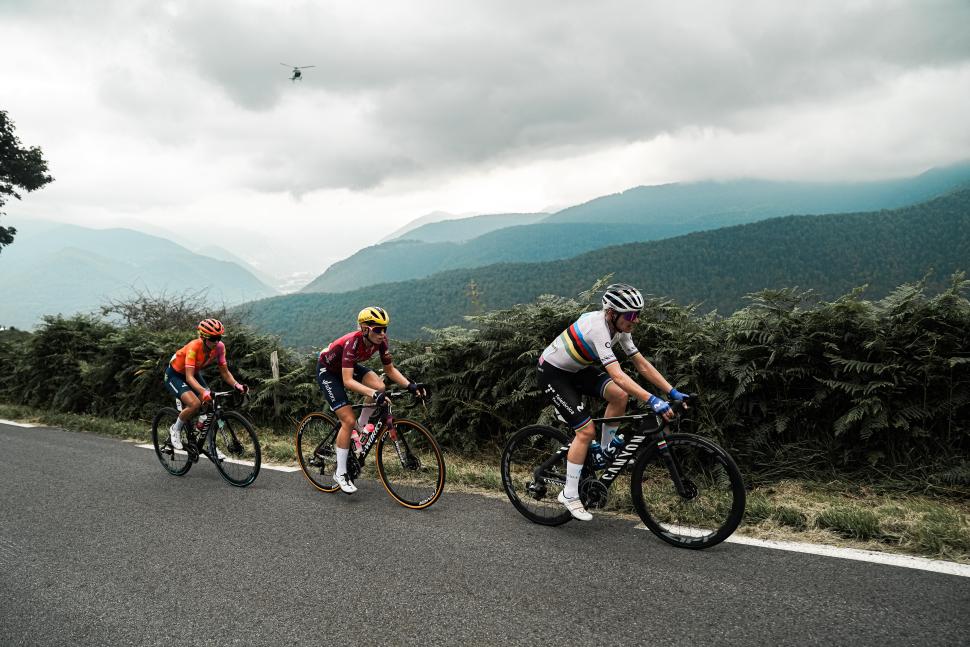
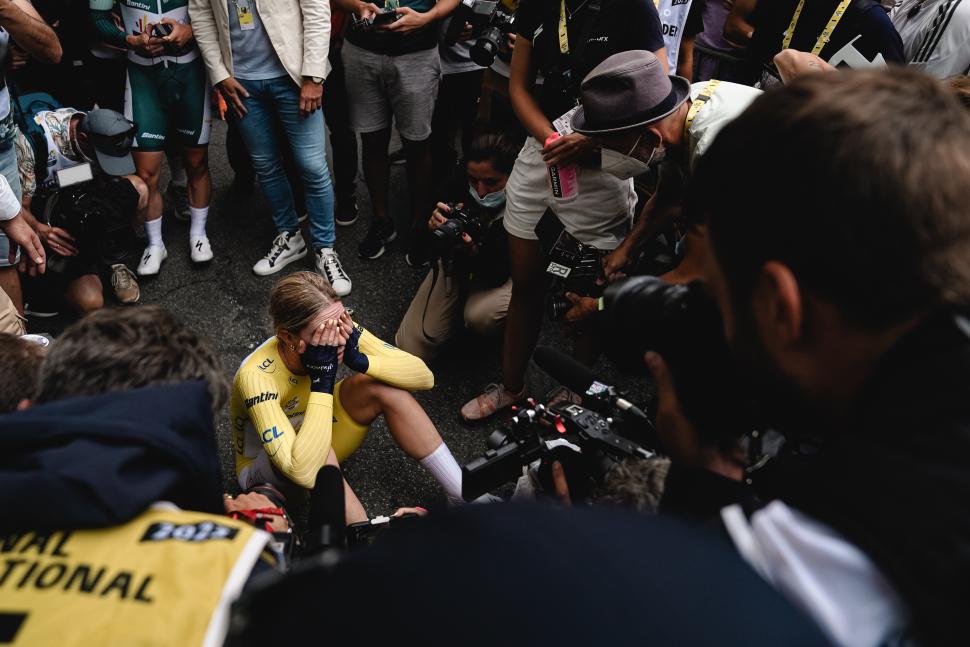

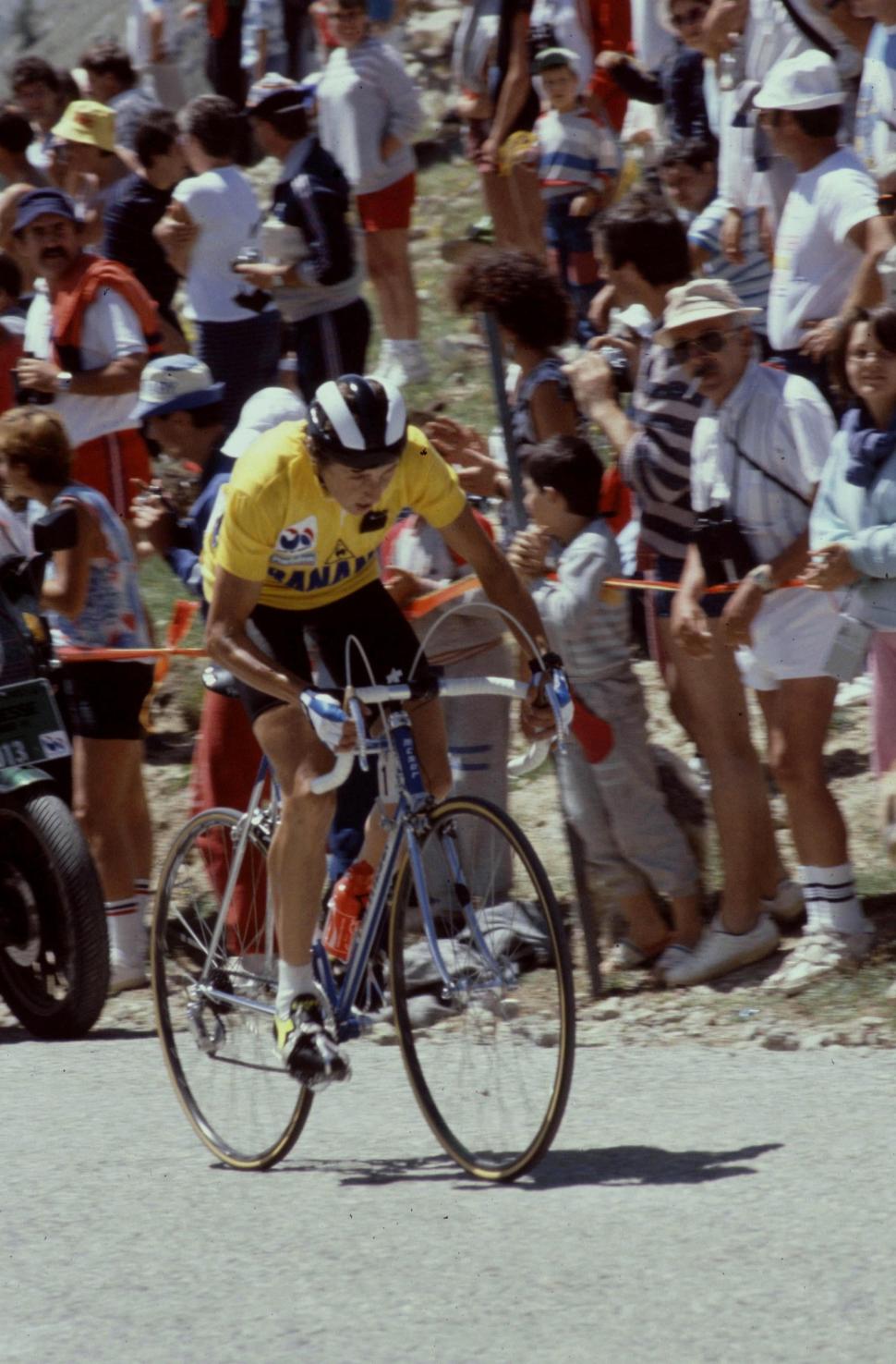


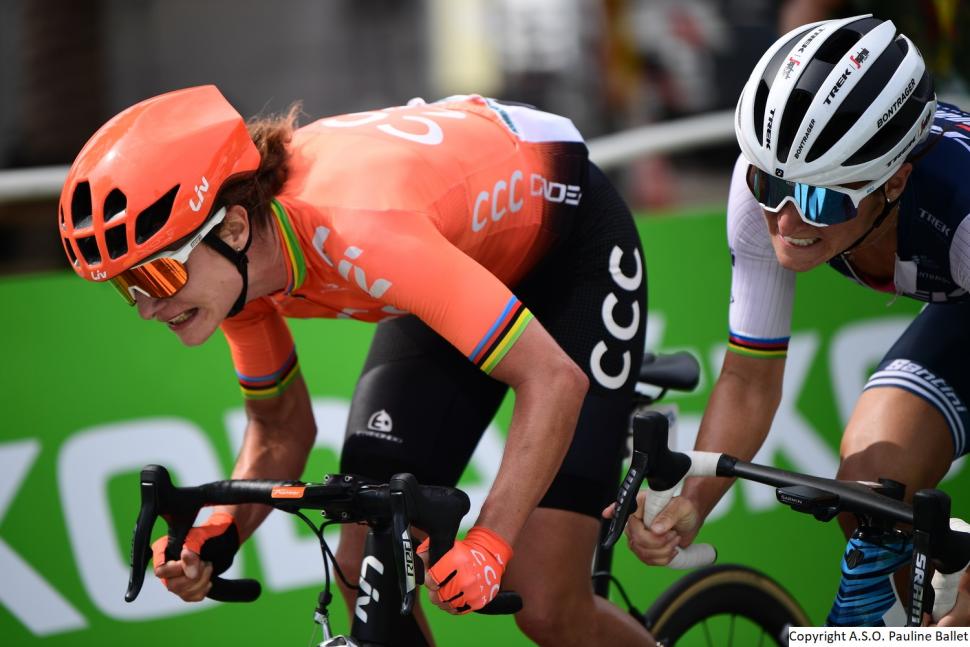
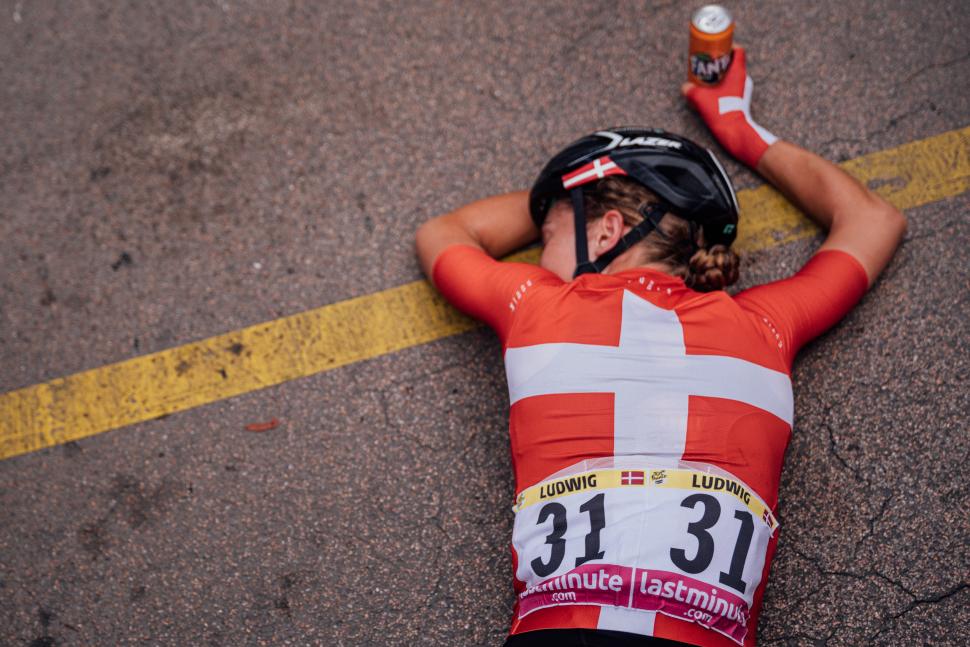
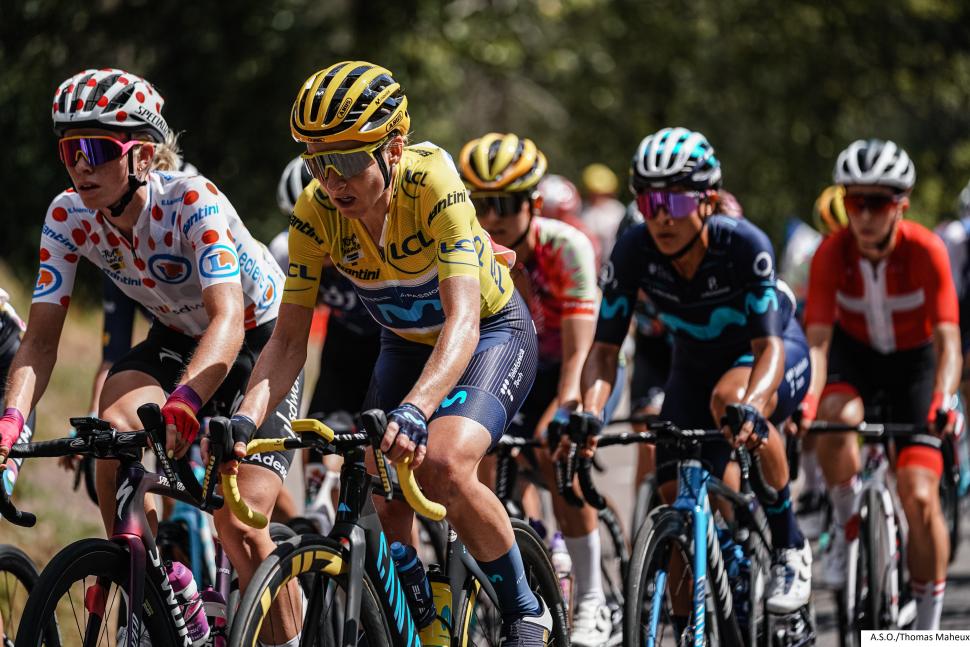
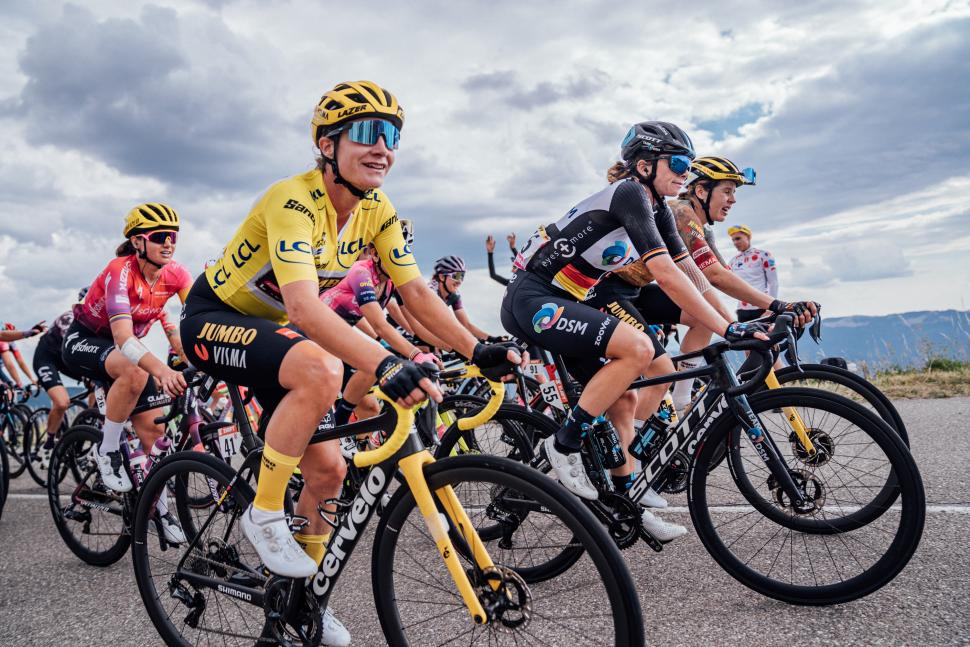
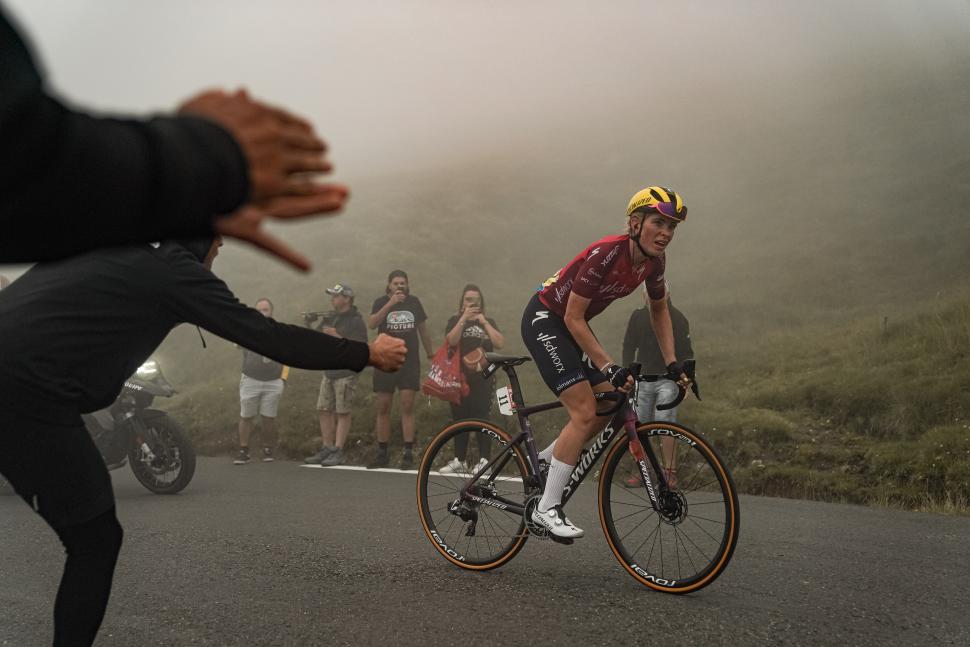

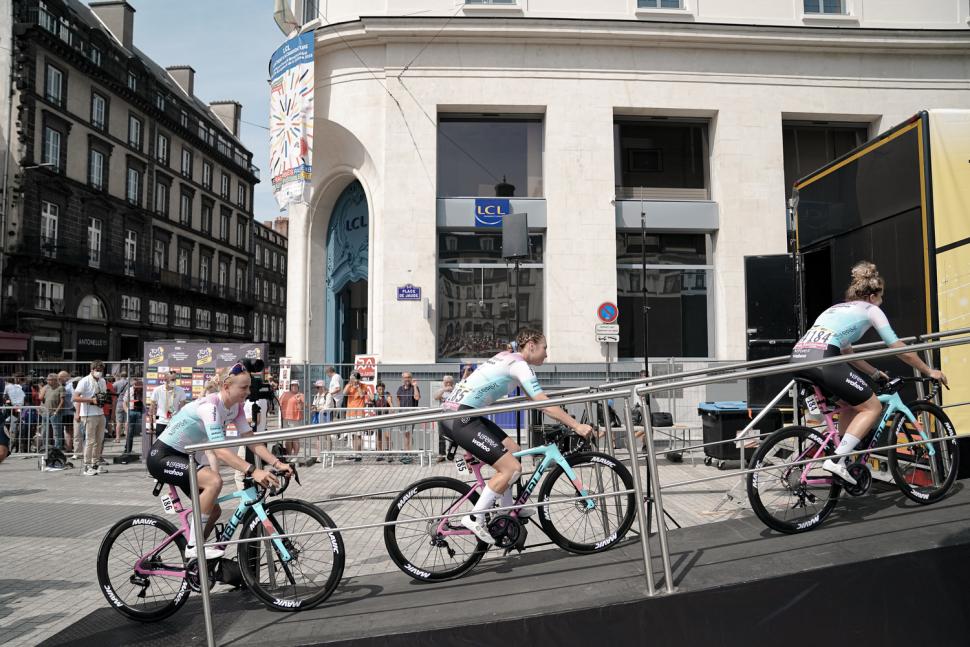
Add new comment
3 comments
I've tried to have a look but couldn't find any highlights on free TV. Anyone know if anything scheduled?
Doesn't look likely right now. As Eurosport have the pan-European rights, we'd be looking at DMax or Quest for highlights. And they can't even be relied upon to broadcast highlights when they've been announced weeks in advance, let alone mere days... 🙄
If you've access to a VPN (not strictly speaking free TV, but useful for loads of other stuff and cheaper than Eurosport), France 2 are showing it live. I'm not sure if they're showing the stages in their entirety as I didn't get a chance to tune in. Similarly over VPN, SBS in Australia seem to have extensive coverage and replays with the advantage of English commentary